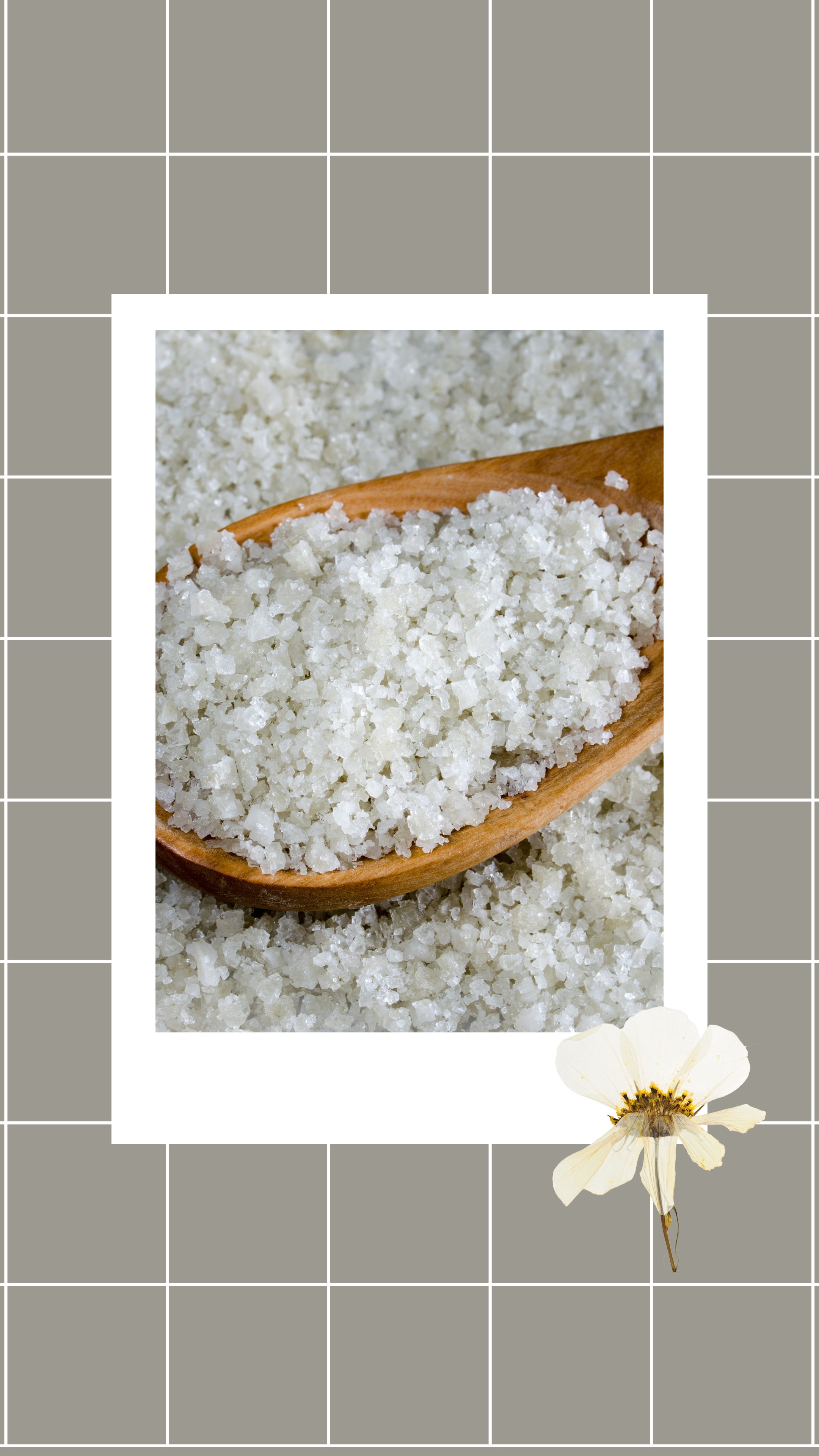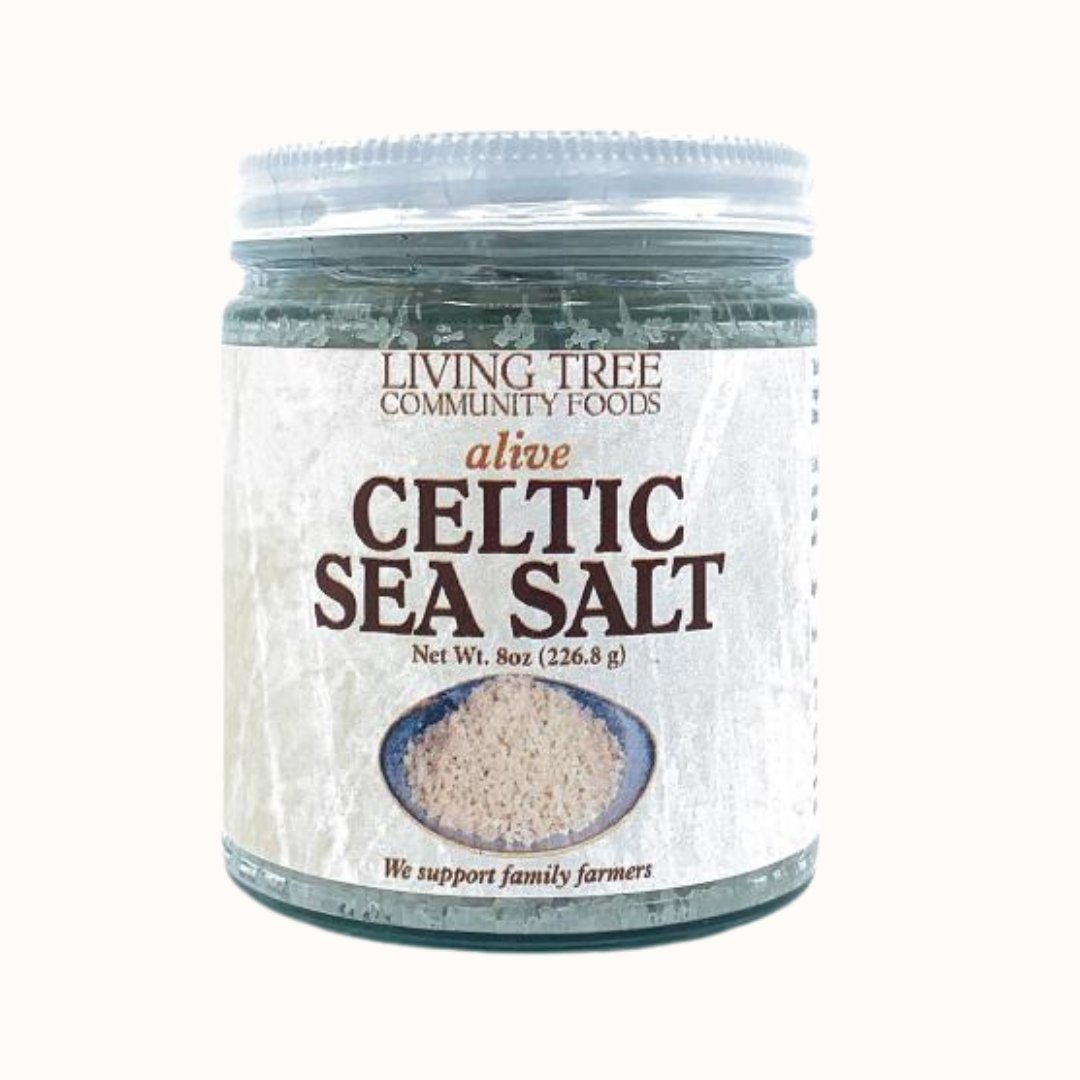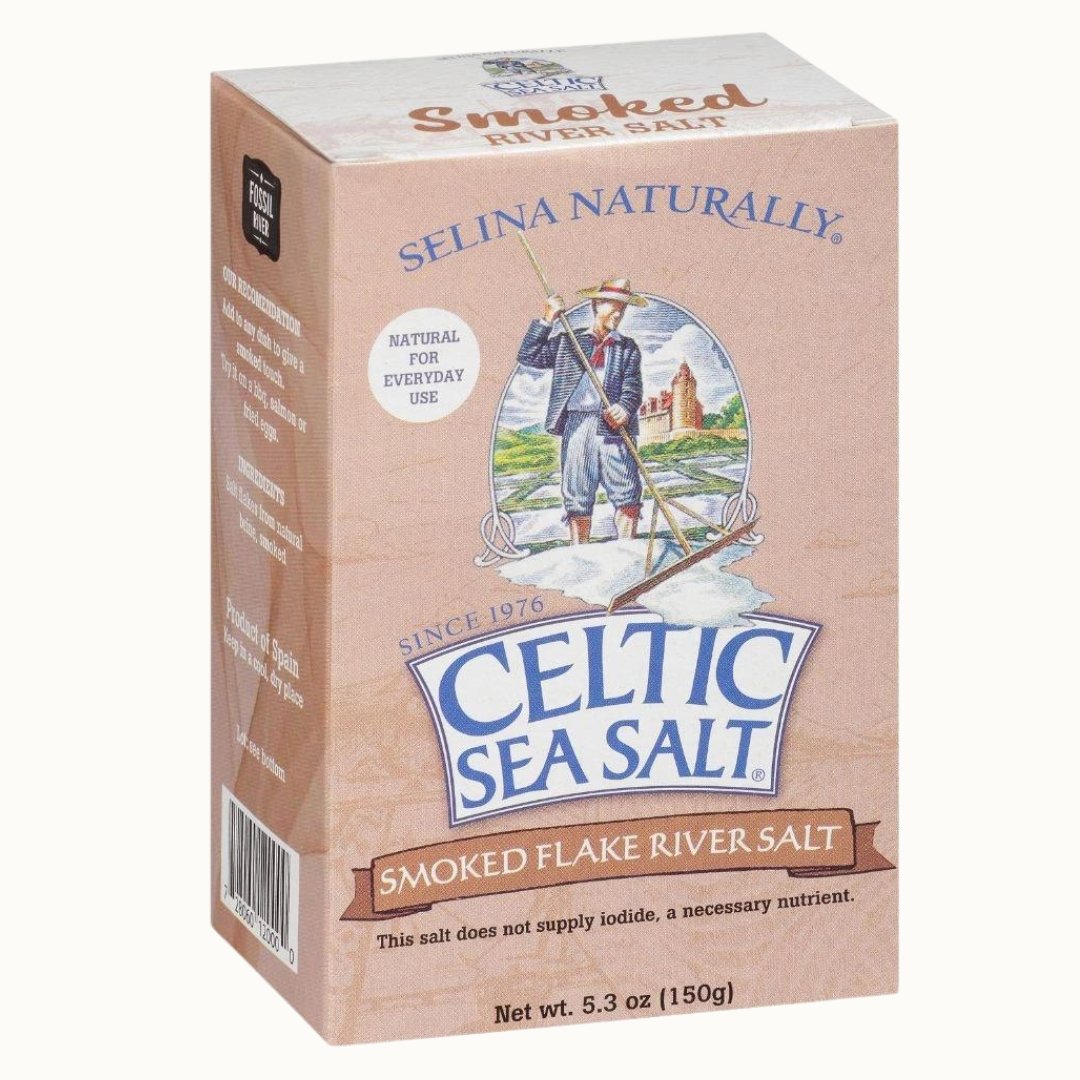Celtic Salt: Health Benefits and Sustainability
W&S Health and Wellness Editorial Team
SHARE ON:
DISCLAIMER: Please consult a qualified healthcare professional before starting any new supplement regimen. Always seek the advice of your physician or other qualified health provider with any questions you may have regarding a medical condition or dietary supplement. Never disregard professional medical advice or delay in seeking it because of information provided in this article. The content is for informational purposes only and should not be considered a substitute for professional medical advice, diagnosis, or treatment. Always consult with your healthcare provider to address any health concerns you may have. Before reading the following content, we also suggest reading our full disclaimer statement here.
Some of the links on this post might contain affiliate links. If you use any of these links to buy something we may earn a commission. For more information, please check out our disclosure statement. Thanks so much for supporting our free content!
We saw this amazing TikTok from @yessiicita (check out her content!) and got inspired to make this article about Celtic Salt.
@yessiicita What are the other benefits of Celtic Salt?? & other daily supplements i should incorporate into my routine? Will be posting weekly updates! #celticsalt #celticsaltbenefits #dailysupplements #wellnesstok #wellnessroutine ♬ original sound - 𝓨𝓮𝓼𝓼𝓲 ✨
Amidst the ever-evolving landscape of health trends, one element has surged into the spotlight - Celtic sea salt. However, the ambiguity surrounding its true nature and origins often leaves health enthusiasts puzzled. This article seeks to unravel the mystery, delving into the genuine health benefits and sustainable practices associated with this rising phenomenon.
While the health and wellness community has enthusiastically embraced Celtic sea salt, a lack of comprehensive information has perpetuated confusion. This article serves as a beacon, illuminating the intricacies of Celtic salt — what it truly offers and the regions from which it originates. In a market flooded with health claims, separating myth from reality is crucial, and our aim is to provide clarity.
Beyond the health considerations, sustainability lies at the heart of our exploration. Celtic sea salt's sustainable origins distinguish it in a market fraught with environmental concerns. Understanding the ecological footprint of our dietary choices is essential, and this article endeavors to shed light on the eco-friendly practices associated with reputable Celtic salt brands.
In this Article
Not ready to read through just yet? No problem, save it on Pinterest!
What is Celtic Salt and Where Does it Come From?
Celtic salt has been gaining popularity on social media lately, attracting attention from health enthusiasts and food lovers. It hails from the coastal regions of France and offers more than just great taste. What makes Celtic salt stand out is its traditional production process, its origin in the Celtic Sea, and its rich mineral content.
Unlike regular table salt, which undergoes industrial refining, Celtic salt is crafted using an artisanal approach. Seawater from the pristine Celtic Sea is carefully transformed as it evaporates in clay-lined ponds under the sun and wind. This meticulous process, often overseen by skilled salt harvesters, results in delicate crystals packed with essential minerals, giving Celtic salt a unique and artisanal quality that appeals to those who value the art of food.
Another distinguishing feature of Celtic salt is its geographical origin. It comes from the Celtic Sea, an extension of the Atlantic Ocean, and inherits its mineral profile from this maritime environment. This specific geography not only adds complexity to the salt's flavor but also contributes to its mineral composition.
Wondering why you’re seeing ads? Check out our Disclosure Policy.
The French origin of Celtic salt adds to its uniqueness. It's produced under the strict regulations of the European Union (EU), ensuring top-notch quality and authenticity at every step, from harvesting to packaging. These EU regulations guarantee that consumers can trust they're getting a product of the highest standards.
When we examine the mineral composition of Celtic salt, we discover a nutritional profile that sets it apart from ordinary table salt. Celtic sea salt distinguishes itself from traditional table salt by containing trace minerals, which are essential nutrients present in small amounts in the salt due to its natural harvesting process. Unlike table salt, which often goes through extensive refinement that removes essential minerals, Celtic salt retains a rich variety of elements. In this regard, it shares similarities with Himalayan salt, offering a healthier alternative for those looking for a salt option that provides more than just sodium chloride.
Health Benefits of Celtic Salt
Looking into the landscape of scientific data and peer-reviewed research, the unique properties of Celtic sea salt come to light, offering a promising alternative for individuals conscious of their well-being. In a comparative analysis, studies highlight its elevated levels of essential minerals such as magnesium, potassium, and calcium. These minerals play pivotal roles in various physiological functions, contributing to bone health, nerve function, and electrolyte balance.
One of the standout features of Celtic sea salt is its potential impact on cardiovascular health. Research suggests that the minerals present in this salt variant could influence factors related to heart health. Magnesium, for instance, is linked to blood pressure regulation, while potassium is recognized for its vasodilatory effects. For women, particularly, these attributes hold significance, offering a natural avenue to address cardiovascular concerns that often accompany different life stages.
What’ mores, Celtic sea salt is as a supportive element for those navigating dietary challenges. Its mineral-rich composition extends beyond basic sodium chloride, presenting an opportunity for individuals to enhance their nutrient intake. This facet is particularly relevant for women grappling with dietary imbalances, providing a subtle yet impactful means of fortifying their nutritional foundations.
“
Scientific data reveals that Celtic sea salt boasts a mineral profile distinct from conventional table salt.
Celtic sea salt also aligns with the principles of holistic nutrition. Unlike refined table salt that may contribute to sodium overload, Celtic sea salt introduces a spectrum of minerals without compromising flavor. This holistic approach resonates with individuals seeking dietary equilibrium, offering a savory option that complements health-conscious choices.
In essence, the health benefits of Celtic sea salt unfold as a tapestry of scientific insights and nutritional advantages. From cardiovascular support to enriching dietary diversity, its merits shine through, presenting a viable option for those attuned to the delicate interplay between taste and well-being.
Is Celtic Salt Good for the Planet?
The process of salt production, a seemingly mundane aspect of our culinary journey, bears a significant ecological footprint. Traditional table salt, harvested through evaporation, often leaves a trail of environmental repercussions. Let's dissect the environmental impacts of salt production and explore how Celtic sea salt emerges as a more sustainable alternative.
Traditional salt production for most table salt found in the United States typically begins with solution minding, the exploitation of underground salt deposits. These operations can disrupt delicate ecosystems, altering landscapes, and affecting wildlife habitats. Additionally, the extraction of salt can lead to subsidence, causing the land above these deposits to sink and potentially resulting in damage to infrastructure.
The extraction process also involves energy-intensive methods like brine pumping and evaporation, which contribute to greenhouse gas emissions. Furthermore, the residual brine is often returned to water bodies, elevating salinity levels and posing ecological threats to aquatic organisms and the quality of water resources.
In contrast, Celtic sea salt production follows a more eco-conscious path. Derived from the pristine waters of coastal regions like Brittany, France, this salt variety is created through solar evaporation and hand-harvesting techniques. This approach significantly minimizes the carbon footprint associated with extraction and processing.
The hand-harvesting aspect of Celtic sea salt production further underscores its sustainability. It's a labor-intensive process that eschews heavy machinery and embraces artisanal practices. This not only reduces energy consumption but also supports local communities, fostering a harmonious relationship between human activities and nature.
The coastal salt pans, where Celtic sea salt is cultivated, often serve as critical wetland habitats. These areas are home to diverse flora and fauna, and the sustainable harvesting practices minimize disruption, ensuring the preservation of these vital ecosystems.
Moreover, the salt pans act as natural filters, purifying water that flows into them. This ecological service enhances water quality and helps mitigate the impact of nutrient runoff and pollution from surrounding areas.
As we navigate a world grappling with environmental challenges, making mindful choices in our daily lives becomes paramount. Celtic sea salt, with its sustainable production methods, offers a promising avenue for those seeking to reduce their ecological footprint while savoring the flavors of our planet responsibly.
Wondering why you’re seeing ads? Check out our Disclosure Policy.
Consuming Celtic Salt
Celtic sea salt stands apart from its culinary counterparts with its robust and briny flavor profile. This unique taste arises from its mineral-rich composition and extraction process, making it a standout ingredient in the kitchen.
When compared to traditional table salt, sea salt, and Himalayan salts, Celtic sea salt exhibits a more pronounced saltiness. This distinct flavor profile means that when incorporating Celtic sea salt into your dishes, it's essential to use it judiciously. While it can be used in cooking, many chefs and food enthusiasts prefer employing it as a finishing salt. Sprinkled lightly atop prepared dishes just before serving, Celtic sea salt imparts its rich, mineral-laden taste, elevating the overall flavor.
Besides enhancing your culinary creations, Celtic sea salt can also offer benefits beyond the kitchen. Adding a pinch of this salt to your drinking water, particularly if you're an avid exerciser or someone who perspires heavily, can help replenish essential electrolytes lost through sweat. This can be especially valuable during prolonged workouts or high-intensity physical activities, ensuring your body maintains its electrolyte balance.
Follow us on:
However, it's crucial to remember that while Celtic sea salt comes with a host of health benefits, it remains a source of sodium. As with any salt, moderation is key, and excessive sodium intake can have adverse effects on your health. Women, in particular, should be vigilant in managing their sodium consumption.
Excessive sodium intake can lead to water retention, raising concerns about bloating and increased blood pressure. For women, maintaining healthy blood pressure levels is vital, as it can influence heart health and overall well-being. High sodium intake has also been associated with a higher risk of developing osteoporosis, a condition that disproportionately affects women as they age.
Incorporating Celtic sea salt into your culinary repertoire can undoubtedly add depth and complexity to your dishes, but it's equally important to remain mindful of your overall sodium intake. By savoring its unique flavor and respecting its potential health benefits in moderation, you can enjoy the savory world of Celtic sea salt while nurturing your well-being.
Celtic Salt Brands We Love
Thinking of trying Celtic Sea Salt for yourself? We suggest checking out these W&S Approved brands:
1.
Celtic Sea Salt, Living Tree Community Foods
2.
Celtic Sea Salt, Ancient Purity
3.
Celtic Sea Salt, Selina Naturally
Celtic Salt: Takeaway
In the culinary realm, Celtic sea salt shines as a flavorful and mineral-rich option, elevating the taste of dishes from around the world. Its robust and briny flavor profile makes it a sought-after ingredient for chefs and food enthusiasts alike.
Beyond the kitchen, Celtic sea salt offers potential health benefits, particularly for those looking to maintain electrolyte balance during intense physical activities. However, it's essential to use it mindfully, as it remains a source of sodium.
In conclusion, Celtic sea salt can be a wonderful addition to a conscious diet. Its unique flavor and potential health advantages make it a savory choice for those seeking to savor life's flavors while embracing overall well-being.
Also, feel free to check out some of our curated conscious living and well-being resources:
Wondering why you’re seeing ads? Check out our Disclosure Policy.














